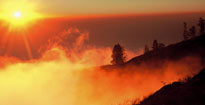
1. Questions, questions
Overview
How do students feel about their local environment? Have they thought about its elements and how any local problems relate it to the global environment? Learn about open and closed questions by producing questionnaires.
Learning aims
*Features of the local environment
*Threats to the global environment
*Open and closed questions
Introduction
Explain that we all share the planet’s environment at a global scale but we normally experience it on a local level. Start the activity by looking at this news story about the global environment:
Kids may pay for climate change
Now move to focus on local environments. If there are problems with the local environment, why is it that children and young people often end up paying?
Prompt: Because the full cost of a problem is only apparent in the long term – so the next generation often pick up the tab for today’s mistakes.
Look at these worksheets – there is one for students and one for teachers.
Questions - students
Questions - teachers
Print out this questionnaire. It was filled in by students in London, who answered questions about their local environment. The worksheet contains the answers but not the questions. Can they work out what the questions were?
Fill in the questions on the sheet and then in pairs interview each other about their own local environment.
Main activity - Questionnaire for another school
Devise a questionnaire for kids at another school to talk about their own local environment. The questions must alternate between open and closed questions. The open questions are ones that encourage longer answers that provide a bit of opinion and colour. They can’t normally be answered in just a word. Closed questions produce shorter often factual answers. Example below
Open - How did you feel?
Closed - Were you scared?
If there is time to do a longer questionnaire it might also be good to think about the five Ws. Who? What ? Where? When? Why? These often start open questions.
Extension activity
If your school is twinned then send your link school some of your local environmental questionnaires.
Start by writing a letter explaining that you will send them a questionnaire and they should fill it in and send it back with one of their own. It will be interesting to compare and contrast your findings.
If you are not twinned – now’s the time to do it…
Click here for all the details
Go back to the journalism lesson plans.